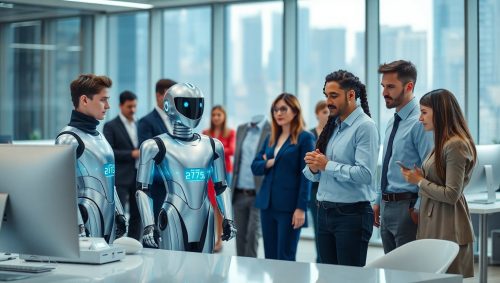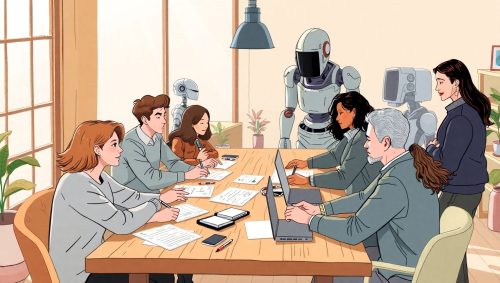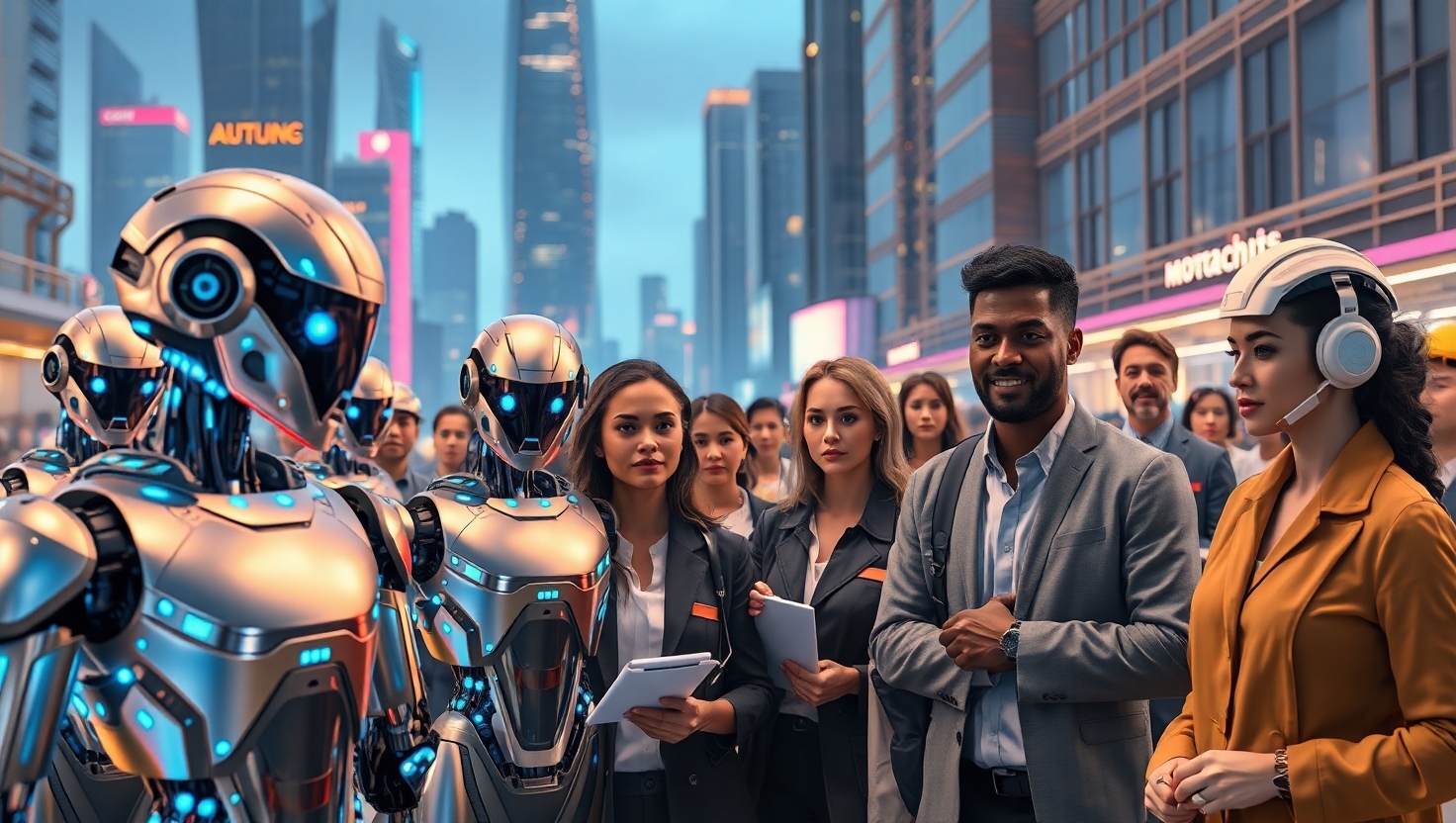The rise of artificial intelligence (AI) in the workplace has ignited a debate that’s both exciting and intimidating. AI agents, ranging from automated chatbots to advanced robotics, are changing how businesses operate. But the big question is, how does this evolution impact the traditional workforce?
In this blog post, we’ll explore the impact of AI agents on the workforce by comparing them with the traditional labor force. We’ll look at the benefits, challenges, and implications of integrating AI into industries that have been reliant on human workers for decades.
Purpose of the Analysis
The primary aim of this analysis is to understand the potential of AI agents in comparison to human workers and how they are reshaping the future of work. We’ll examine not just the technological aspects but also the economic, social, and ethical implications that come with this transformation.
Scope of Comparison
This blog will provide a comprehensive overview of the capabilities, costs, scalability, and challenges of AI agents compared to the traditional workforce. We’ll also explore the changing dynamics in the workplace and discuss what businesses, employees, and policymakers need to consider moving forward.
Retrospective on Workforce Evolution
Historical Overview
The workforce has evolved in fascinating ways over the centuries. From the days of manual labor to the rise of mechanization during the Industrial Revolution, and the digital transformation in the late 20th century, each phase brought new ways of working. In the early days, humans did the bulk of the work, but as machines were developed, industries quickly realized the power of automation in improving efficiency and reducing costs.
This digital transformation continued into the 21st century, with the internet, cloud computing, and robotics all changing the business landscape. However, one of the most significant shifts in recent times has been the introduction of AI technologies that promise to alter the entire structure of how work is done.
Emergence of AI Agents

AI agents are becoming increasingly sophisticated. These digital workers range from simple task automation systems to advanced AI-driven systems capable of performing complex, human-like roles. From AI chatbots handling customer support to machine learning algorithms improving supply chain management, AI agents are carving out roles that were once the domain of humans.
With these advancements, AI agents are poised to take over many routine, repetitive tasks while working alongside human workers to improve productivity and decision-making.
Comparative Analysis
AI Agents
Capabilities and Efficiency
AI agents bring a remarkable level of efficiency to the table. Whether it’s automating routine tasks like data entry or enabling complex decision-making, AI systems can process and analyze vast amounts of data at speeds humans simply can’t match. In industries like finance, healthcare, and customer service, AI agents are already proving to be invaluable.
For example, in healthcare, AI-driven systems can analyze medical images faster than doctors, assisting them in diagnosing diseases. In customer service, AI chatbots are able to handle thousands of queries simultaneously, ensuring that customers get the support they need without human intervention.
Implementation Costs
One of the first things companies consider when implementing AI agents is the initial investment. While the upfront costs of purchasing AI systems, training employees, and integrating AI with existing systems can be significant, the long-term savings can be substantial. AI agents can work 24/7, don’t require benefits or sick leave, and can scale quickly to meet demand, reducing the need for human labor in many cases.
Scalability and Flexibility
AI agents are highly scalable. Businesses can deploy them to handle different tasks across various functions, and they can be scaled quickly to manage surges in demand. For example, AI-powered bots can simultaneously assist thousands of customers during peak seasons without additional resources. This scalability allows companies to remain flexible in rapidly changing environments.
Traditional Workforce

Human Skills and Adaptability
While AI agents excel in repetitive, data-driven tasks, humans still outperform machines in areas requiring critical thinking, emotional intelligence, and creativity. Skills such as problem-solving, strategic thinking, and emotional empathy are vital to many roles, especially in industries like healthcare, education, and creative fields.
Humans also adapt to new situations more fluidly, applying their knowledge and experience to solve unique, unexpected challenges. The emotional component of human interactions, such as understanding body language or interpreting tone, is something that AI agents still struggle with.
Economic and Social Impact
The traditional workforce has played a central role in driving economic development and social mobility. Jobs have been created across industries, from agriculture to technology, providing livelihoods for billions. However, as AI systems replace many of these jobs, there is growing concern about job displacement and the potential for increased inequality.
On the flip side, the rise of AI could also generate new roles, particularly in fields related to technology and AI maintenance, opening up opportunities for skilled workers. The challenge lies in reskilling the existing workforce to meet these new demands.
Challenges and Limitations
The traditional workforce also faces certain limitations. Physical fatigue, cognitive overload, and time constraints make it difficult for humans to consistently perform at their best. Additionally, workers in manual labor or low-skill positions may find it harder to compete with AI agents, who can perform tasks quickly and consistently without breaks.
Key Drivers and Influencing Factors
Technological Advancements
AI advancements are perhaps the biggest driver of this transformation. The continuous improvement in machine learning, natural language processing, and computer vision has allowed AI agents to become more autonomous and capable of taking over more complex roles. Cloud computing, big data analytics, and AI integration tools also make it easier for businesses to adopt AI technologies.
Economic Factors
The rising cost of labor, coupled with the need for increased productivity, is pushing businesses to adopt AI. While the initial investment in AI technologies can be high, the long-term savings in terms of labor costs, error reduction, and increased efficiency can outweigh these expenses.
Regulatory and Ethical Considerations
As AI takes over more tasks, it raises significant ethical and legal concerns. Issues related to data privacy, algorithmic bias, and decision-making transparency need to be addressed to ensure that AI is used responsibly. Policymakers must regulate AI development and usage to prevent misuse and ensure fair outcomes.
Implications & Recommendations
For Businesses
Businesses should consider integrating AI agents alongside their human workforce. Rather than replacing workers, AI can complement human skills, making operations more efficient and cost-effective. A strategic approach that combines the best of both worlds will help companies maximize productivity while maintaining a human touch.
For Employees
Employees should focus on upskilling to adapt to the changing landscape. This includes acquiring new technical skills to work alongside AI systems, as well as honing their uniquely human traits such as creativity and emotional intelligence.
For Policymakers
Policymakers must find ways to balance technological progress with job security. This includes providing funding for reskilling programs, addressing the ethical concerns of AI adoption, and ensuring that the economic benefits of AI are shared fairly across society.
Challenges in Adopting AI Agents
Technical Challenges
Integrating AI systems into existing business infrastructure is not without its hurdles. AI solutions often require significant customization, data preparation, and system integration, which can be costly and time-consuming.
Cultural Resistance
There is also cultural resistance in many organizations, where employees fear that AI will replace their jobs. Managing this transition involves clear communication, employee involvement, and creating a supportive environment that helps workers understand AI as a tool rather than a threat.
Ethical Concerns
The ethical challenges of AI adoption are profound. Issues like algorithmic bias, privacy concerns, and the transparency of AI decision-making processes must be addressed to ensure that AI is used responsibly and does not perpetuate inequalities.
Predictions for the Next Decade
Future Workforce Dynamics
The workforce will likely become a blend of human and AI agents. Rather than fully replacing humans, AI will augment human capabilities, enabling workers to focus on tasks that require creativity, decision-making, and emotional intelligence.
Long-term Economic Impact
In the long term, widespread AI adoption could lead to shifts in global economies. While AI may replace certain jobs, it is also expected to create new ones, particularly in tech sectors. The key will be in how societies manage these transitions and ensure that workers are not left behind.
Skill Requirements
Emerging skills for future workers will likely include expertise in AI and data analysis, as well as soft skills like critical thinking, creativity, and emotional intelligence. Workers will need to adapt to an increasingly technology-driven environment.
Summary & Call to Action
As AI agents continue to reshape the workforce, businesses, employees, and policymakers must be proactive in managing this change. For businesses, integrating AI in a way that complements human workers can lead to enhanced productivity and innovation. For employees, focusing on continuous learning and adapting to new roles is essential. For policymakers, creating frameworks that address the ethical and economic implications of AI is critical for ensuring a fair and sustainable future.
FAQ
1. What are AI agents, and how do they differ from traditional workforce roles?
AI agents are automated systems designed to perform tasks traditionally done by humans, often improving efficiency and scalability. Unlike humans, they don’t require rest and can process large datasets quickly.
2. How do AI agents enhance productivity compared to human workers?
AI agents can perform repetitive tasks faster, reduce human error, and handle more work simultaneously. This allows human workers to focus on more complex, creative tasks.
3. What industries are most affected by the integration of AI agents?
Industries like customer service, healthcare, finance, and manufacturing are experiencing significant transformations due to AI integration.
4. Are there any jobs that AI agents cannot perform?
Jobs requiring creativity, complex decision-making, or emotional intelligence are still best suited for humans. AI agents also struggle with tasks that require a high degree of adaptability.
5. How does the cost of implementing AI compare to maintaining a traditional workforce?
While the initial costs of AI implementation can be high, over time, AI agents can reduce operational costs, improve efficiency, and scale operations without additional labor expenses.
6. What are the ethical concerns associated with replacing humans with AI agents?
Key ethical concerns include data privacy, algorithmic bias, and the potential for AI to perpetuate inequalities in decision-making.
7. How can employees prepare for a future with more AI agents in the workforce?
Employees should focus on upskilling in AI-related fields and enhancing their creative and emotional intelligence to complement AI technology.
8. What are the potential economic impacts of widespread AI adoption?
AI adoption could lead to job displacement, but it could also create new roles and drive economic growth, particularly in tech sectors.
9. How do regulatory bodies view the rise of AI in the workplace?
Regulatory bodies are focusing on creating ethical frameworks for AI adoption, ensuring fairness and protecting workers’ rights.
10. What are the long-term predictions for AI agents in the workforce?
AI agents are expected to work alongside humans, augmenting their capabilities. The workforce will be increasingly tech-driven, with a focus on creativity, problem-solving, and emotional intelligence.

